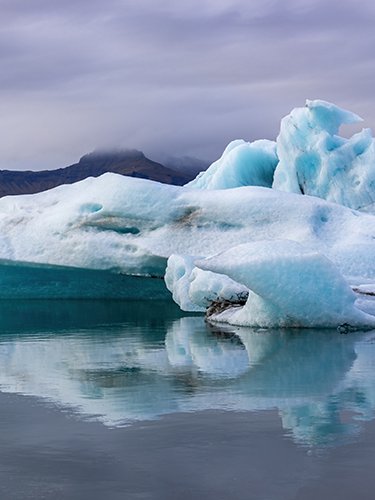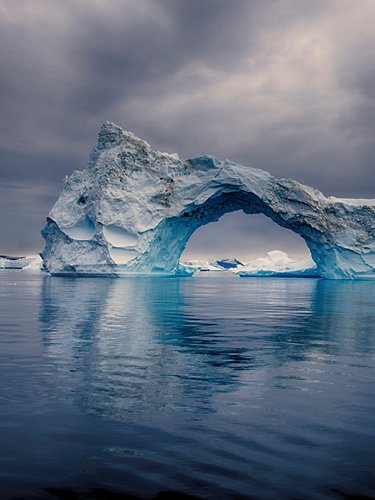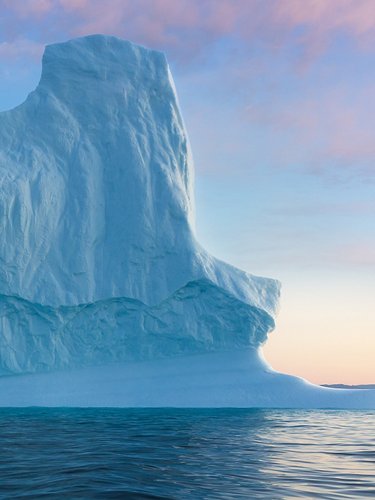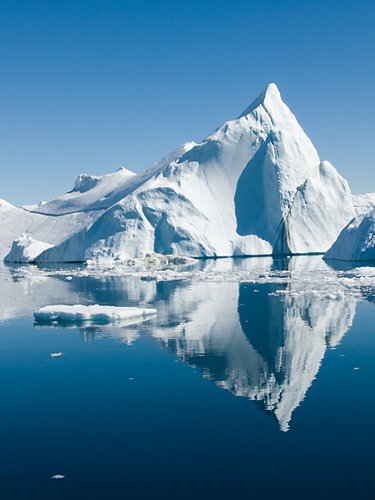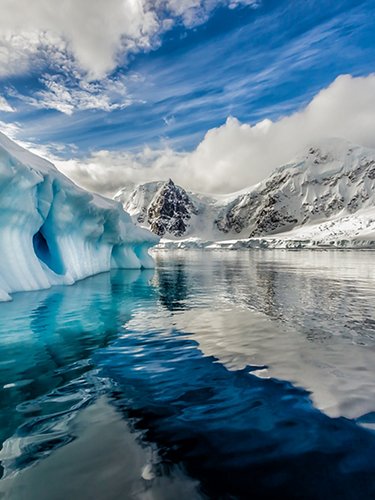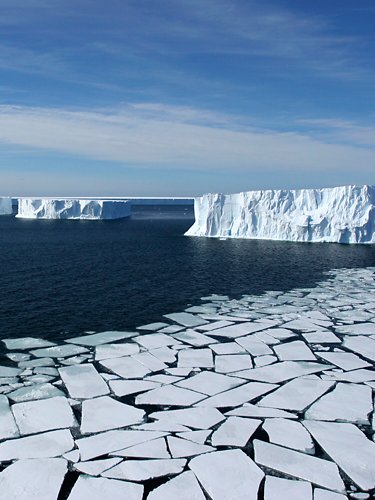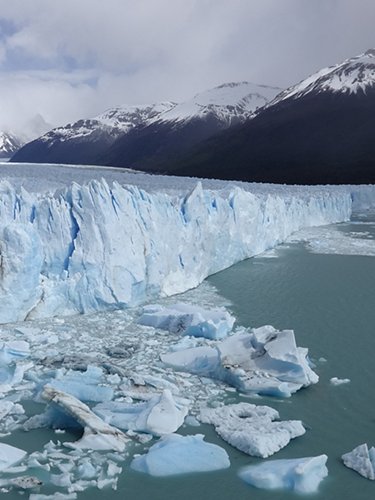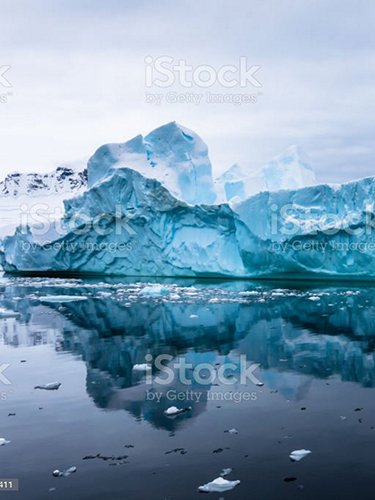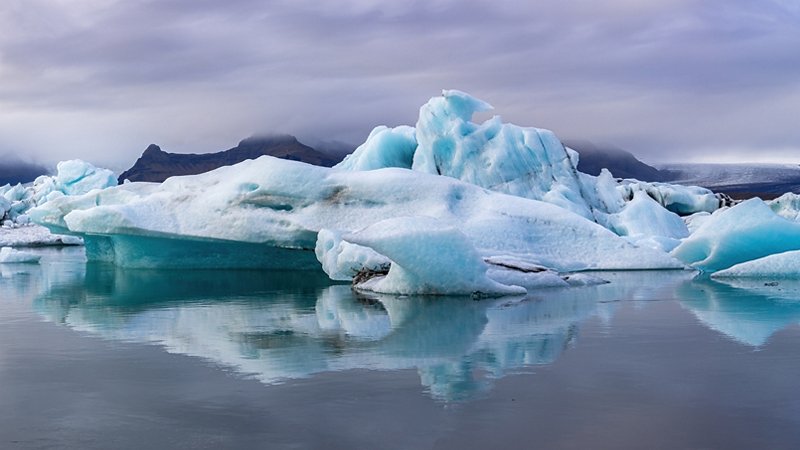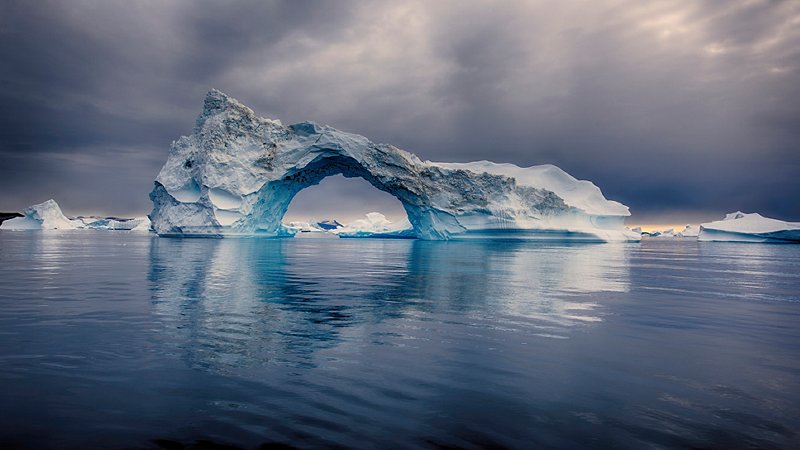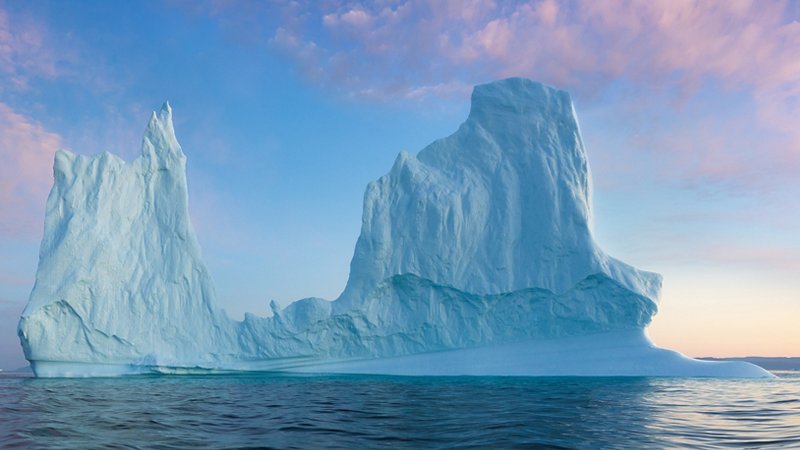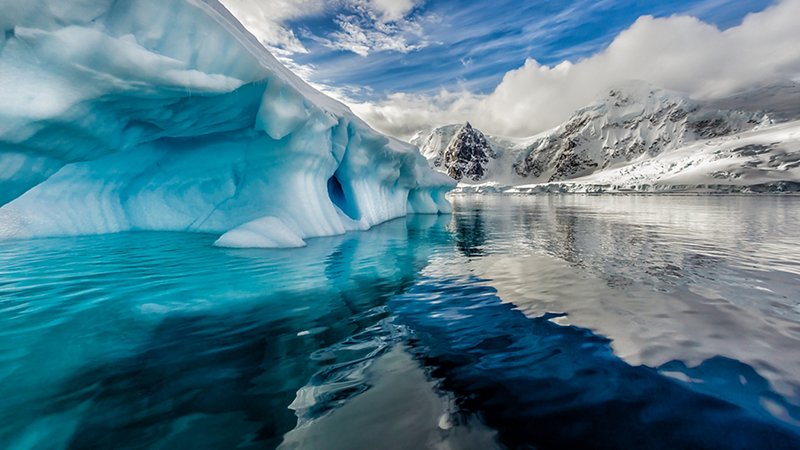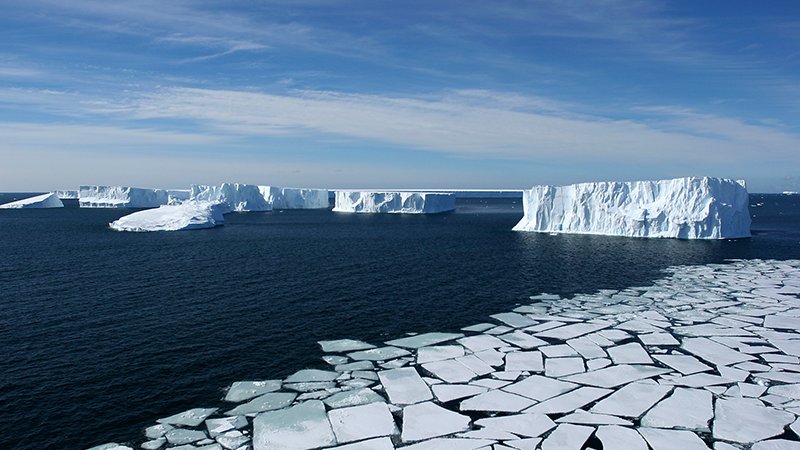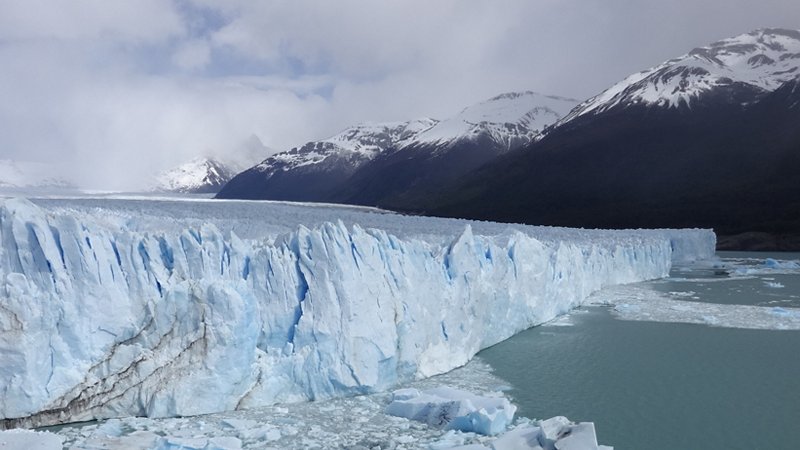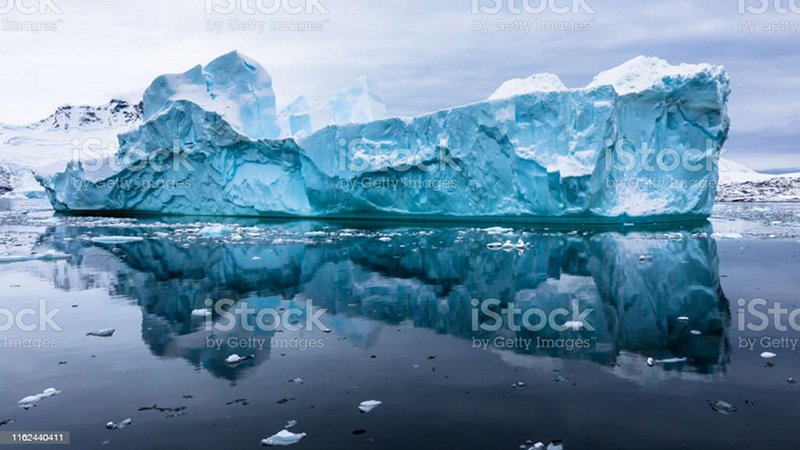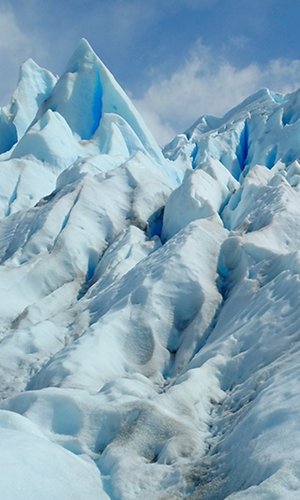Since ice is less dense than water, icebergs float on the surface of the sea: the part below the waterline is therefore about 7-10 times (depending on the difference in density between water and ice) taller than the one above it. If you consider that some icebergs can reach several tens of metres above the sea level, you can well understand how the name ‘mountain of ice’ (the word originates from ice and berg (mountain), mountain of ice) is particularly suitable: an iceberg whose visible part is 30 metres high continues under sea level to a depth of over 200 metres!

